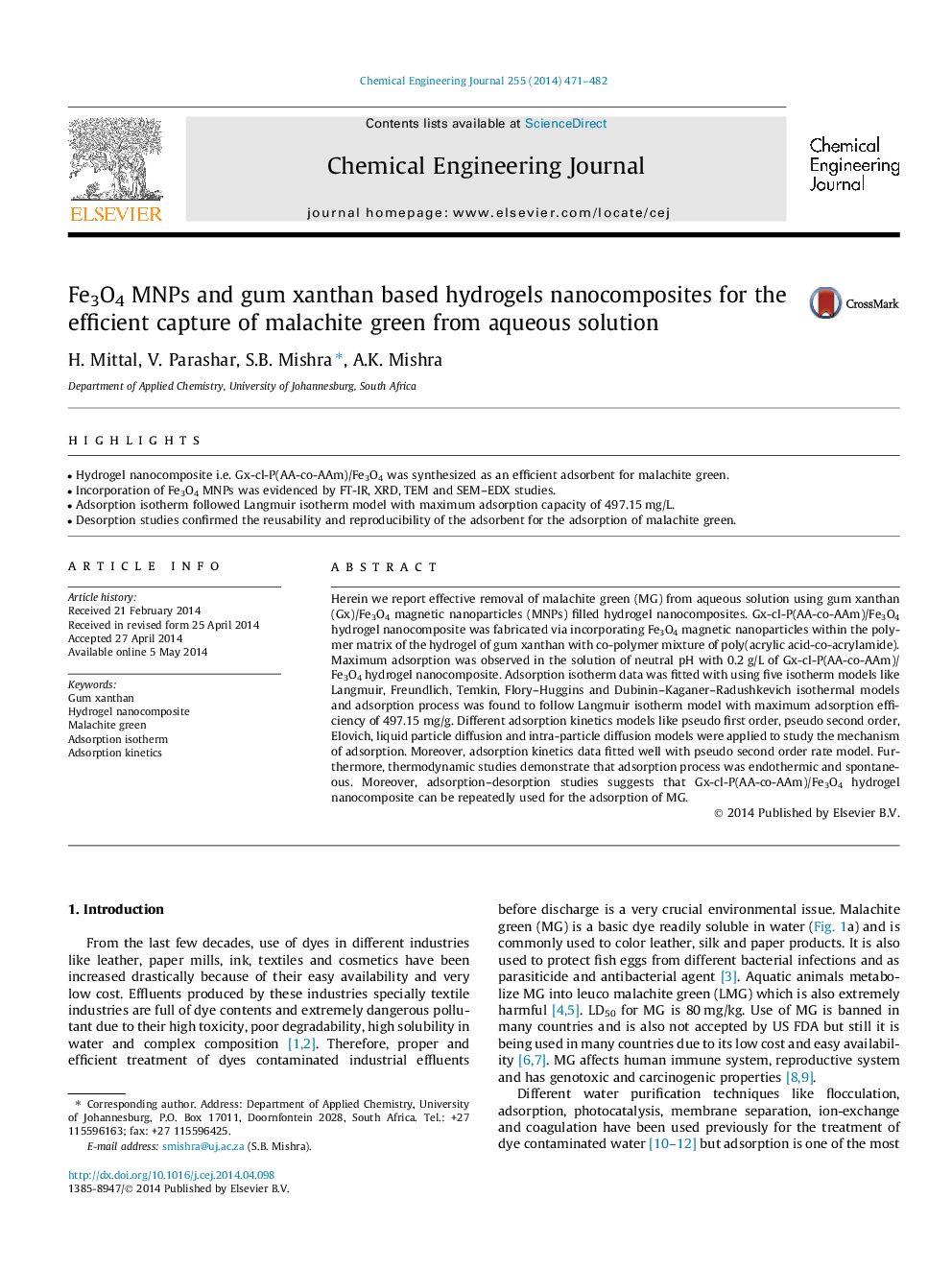| کد مقاله | کد نشریه | سال انتشار | مقاله انگلیسی | نسخه تمام متن |
|---|---|---|---|---|
| 147071 | 456385 | 2014 | 12 صفحه PDF | دانلود رایگان |

• Hydrogel nanocomposite i.e. Gx-cl-P(AA-co-AAm)/Fe3O4 was synthesized as an efficient adsorbent for malachite green.
• Incorporation of Fe3O4 MNPs was evidenced by FT-IR, XRD, TEM and SEM–EDX studies.
• Adsorption isotherm followed Langmuir isotherm model with maximum adsorption capacity of 497.15 mg/L.
• Desorption studies confirmed the reusability and reproducibility of the adsorbent for the adsorption of malachite green.
Herein we report effective removal of malachite green (MG) from aqueous solution using gum xanthan (Gx)/Fe3O4 magnetic nanoparticles (MNPs) filled hydrogel nanocomposites. Gx-cl-P(AA-co-AAm)/Fe3O4 hydrogel nanocomposite was fabricated via incorporating Fe3O4 magnetic nanoparticles within the polymer matrix of the hydrogel of gum xanthan with co-polymer mixture of poly(acrylic acid-co-acrylamide). Maximum adsorption was observed in the solution of neutral pH with 0.2 g/L of Gx-cl-P(AA-co-AAm)/Fe3O4 hydrogel nanocomposite. Adsorption isotherm data was fitted with using five isotherm models like Langmuir, Freundlich, Temkin, Flory–Huggins and Dubinin–Kaganer–Radushkevich isothermal models and adsorption process was found to follow Langmuir isotherm model with maximum adsorption efficiency of 497.15 mg/g. Different adsorption kinetics models like pseudo first order, pseudo second order, Elovich, liquid particle diffusion and intra-particle diffusion models were applied to study the mechanism of adsorption. Moreover, adsorption kinetics data fitted well with pseudo second order rate model. Furthermore, thermodynamic studies demonstrate that adsorption process was endothermic and spontaneous. Moreover, adsorption–desorption studies suggests that Gx-cl-P(AA-co-AAm)/Fe3O4 hydrogel nanocomposite can be repeatedly used for the adsorption of MG.
Journal: Chemical Engineering Journal - Volume 255, 1 November 2014, Pages 471–482